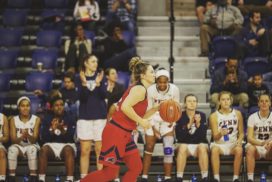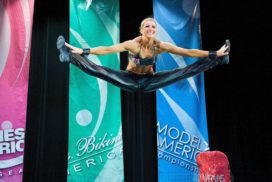ACL RECONSTRUCTION AND REPAIR
What is the ACL?
The Anterior Cruciate Ligament (ACL) is the ligament that runs diagonally in the middle of the knee. It prevents the tibia from sliding out in front of the femur, as well as provides rotational stability.
The ACL is most commonly injured while playing basketball, soccer, tennis, and skiing—sports that often have the athlete performing sudden stops, jumping, or quick changes in direction. When athletes place weight on their knee, and twist—ACL injuries can occur resulting in either a stretched, partially torn, or completely torn ACL. The most common form of injury is a complete tear that requires reconstructive surgery.
What are the Symptoms of an ACL Injury?
Symptoms of an ACL injury include:
- a loud popping sensation in the knee
- Inability to move knee
- Instability
- Swelling
- Extreme pain
Common Causes of ACL Injuries include:
- Sudden stopping
- Pivoting with a planted foot
- Landing awkwardly after a jump
- A forceful blow to the knee
- A fall skiing
Having an MRI after the injury confirms the injury of the ACL, as well as bone bruises. The MRI also helps your doctor evaluate the knee for evidence of cartilage injury, and any tear in the meniscus (the cartilage ring that serves as a bumper cushion between the thigh and shin bones).
What are the Treatments for an ACL Injury?
Surgical Treatments
How will my ACL be reconstructed?
This procedure is done through a small incision made at the inside portion of the knee. The injured ligament will be replaced with a graft. The graft can be either a hamstring tendon from the same leg, a cadaver hamstring allograft, or part of the patellar tendon with a little bit of bone from the same leg (BTB). The surgeon drills tunnels into the femur (thigh bone) and tibia (shin bone); she then threads the new graft through the tunnels and uses buttons or screws to keep the graft in place. Your body will then grow into the graft, making it your own.
How long will I stay in the hospital?
This surgery is done as ambulatory surgery, meaning you will go home the same day of surgery.
What are the possible risks and complications of surgery?
As with any surgery there is a risk of DVT (blood clot), nerve damage, and postoperative infection. Specific risks and complications include but aren’t limited to re-tear and post-op stiffness.
When can I drive?
You may not drive while taking pain medication. In addition, if it is your right knee that had surgery, you will not be able to drive for approximately 6 weeks after surgery or until the brace is removed.
When can I resume jogging?
You will not resume jogging until cleared by your physician. This typically is around 4-5 months after surgery, depending on quadriceps strength. You will be allowed to begin biking without resistance once you have adequate range of motion and will begin this with your physical therapist. Once adequate quad strength is demonstrated you will transition to the Elliptical machine, then running is the next step after that.
When can I return to my sport?
There are many factors in returning to sport after surgery. Most patients are able to return around 7-9 months after surgery. Please see Your Surgery and Physical Therapy for more information on this condition.
Overview
ACL tears/ ruptures occur in approximately 100,000 -200,000 active adolescents and adults each year in the united states. While ACL reconstruction (using a piece of another tissue from the knee or donor tissue to make a new ACL) is used commonly to treat these injuries, the increased pain and risks of complications from the graft harvest and surgical procedure, as well as the length of time until complete recovery and return to sport, remain areas we need to focus and improve upon. In addition, there is significant evidence to show that many patients will go on to develop arthritis after ACL injuries and reconstructions within the first 10 years after injury and surgery.
Modern developments
Attempts at ACL repair (reattaching the injured tissue to the bone where it tore from) rather than reconstruction, was the mainstay of surgical technique in the US in the 70’s and 80’s. However, due to the mediocre results (almost a 50% failure) surgical repair was mostly abandoned by the mid 1990’s. However, newer arthroscopic fixation techniques have improved our ability to ‘fix’ or repair certain types of tears that have an improved ability to heal. Specifically, tears that occur at the femoral (thigh bone) attachment that leave the bulk of the ACL in good condition maybe good candidates for repair rather than reconstruction (which requires removal of the patients own tissue and substitution with new tissue).
Modern MRI makes it possible for us to identify the types of tears that are more amenable to repair, and technical advancement make it possible to repair the ACL anatomically with very strong fixation that allows for earlier rehabilitation.
Why repair?
Primary repair of the ACL has many advantages over the standard ACL reconstruction that is used in most cases today. There is less trauma induced to the knee, which leads to less swelling and increased ability to get range of motion back quickly, as well as to allow the muscles around the knee to begin to function earlier. Repair allows us to keep the primary attachments of the ACL as well as the innervation of the native ACL which we know is very important in proprioceptive function (the ability of the brain to sense the position of the knee in space). This leads to decreased muscle atrophy post operatively and decreased time to full recovery and return to sport.








